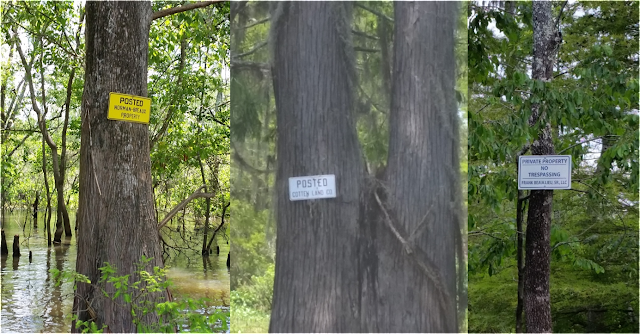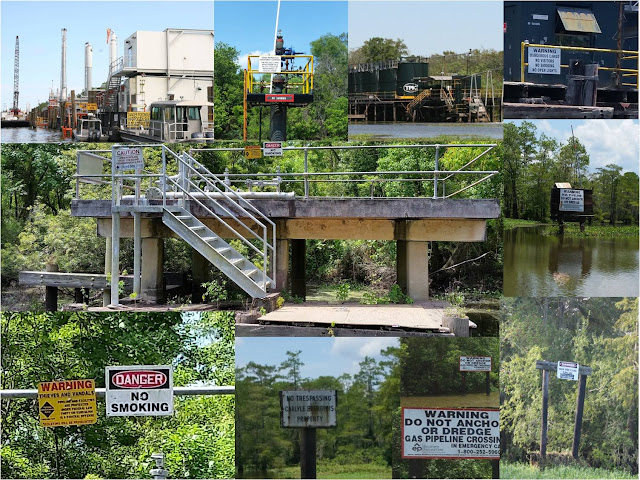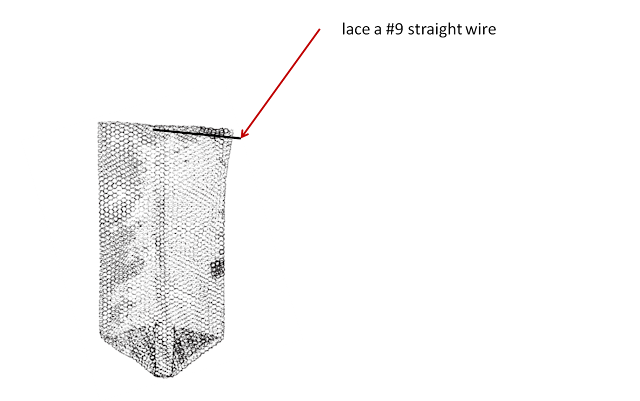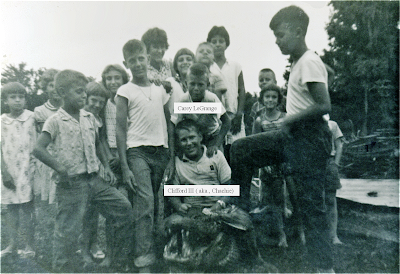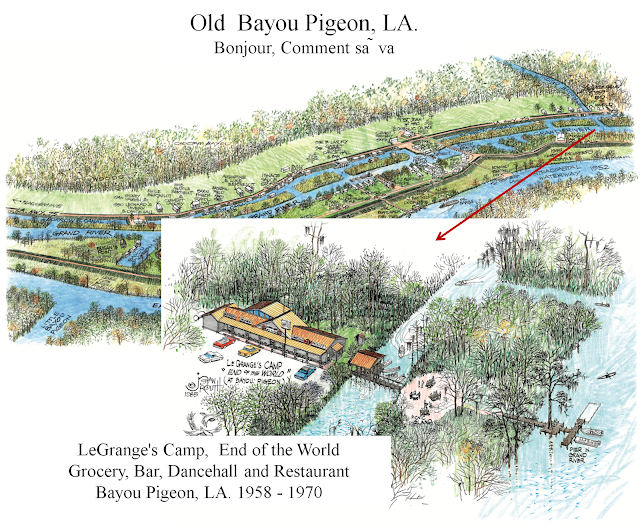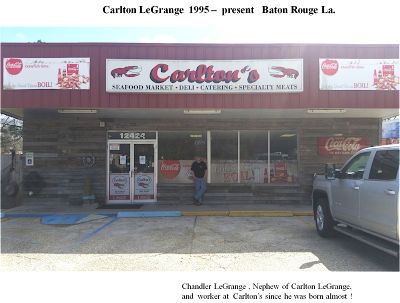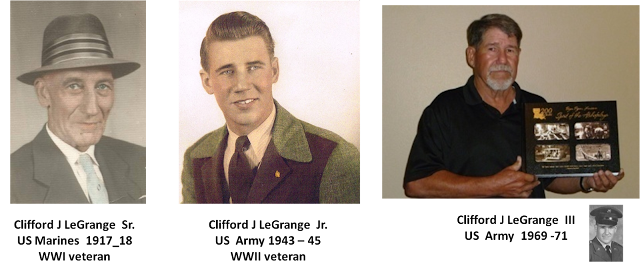Here’s your sign ;
This Blog posting is about SIGNS…. in the Atchafalaya Basin/ Floodway .
For the record, polls / surveys reveal that most people view signs in scenic places as intrusive and that they take away from the natural visual environment and beauty of the outdoors…
With that said that said I do realize there are many legitimate reasons for signs and some are absolutely necessary ie., ‘Warning Signs ‘calling attention to an unexpected waterway condition / obstruction.
And sometimes…if you see a sign it means "Hey, buddy, you're were not here first, somebody was here before you , ie., meme, ‘Kilroy was here’
In some cases signs, done skillfully have a great potential in contributing to the sense of importance / history about a place, ie., historical markers.
The stimulus for this blog post… is that I have been noticing a lot of signs showing up in the Bayou Pigeon / Grand / Lake Vector of the Atchafalaya Basin these days. If you travel the Basin from the Bayou Pigeon public boat launch… in the main bayous you've probably noticed this as well. At times, it seems you can see a sign at anytime in your visual line of sight. It makes you wonder, are all these signs really necessary ?
Are they helpful, or do they reduce the visual environment of the Atchafalaya swamp?
I’ll let you the readers decide for yourself.
Thus this little history about / on signs in our area of the Atchafalaya Basin
Landowner / Property signs
Prior to the 1940’s / 50’s there were just a few signs relative to trespassing and land ownership, in the basin. A tradition of tolerance had developed among the landowners for the Swampers regarding fishing, hunting and trapping. Basically a culture had developed in the early 1900’s that the landowners allowed Swampers to hunt, fish and trap fur wherever they found fish and game . This was primarily because the area was isolated and the Swampers lived on houseboats versus the land and they moved around a lot…, ie. they were not long term Squatters.
Most Atchafalaya Basin landowners have always had signs stating posted / no trespassing marking their property lines. What does the posting of No Trespassing signs accomplish? "Protection from Property Liability“. Law Code requires that land owners post conspicuous signs near the primary entry points of the area that are closed to the public. In the Atchafalaya Basin they are typically small and strategically placed. When the signs are high quality and well maintained the landowners credibility / professionalism is enhanced.
Williams Inc. –
The company internet web site says, ‘Williams inc. is a privately held company which has been operating in Louisiana since 1935. It is the successor to the F. B. Williams Lumber Company and its affiliates which began operations in 1872. Williams, Inc. and its affiliates currently manage over 85,000 acres of land located in 13 parishes in South Louisiana. The company has continued a tradition of protecting and enhancing the value of its properties by prudent and responsible management. There lands are managed as a renewable resource and some of our hunting and campsite lessees have been with us for generations.”
My experiences are, with Williams Inc. that they are professional and keep their property lines clean, clearly visible and unobtrusive. . Why do I say that? They use small, long lasting metal signs , attached with minimum nails, ( 2, Galvanized), strategically located for long term sustainability. Property corners highlighted by blue paint at the start and show the N/S, E/W direction… of the line. Periodically on heavily traveled Oil & Gas access canals they will have larger signs marking their property line.
Jeanerette Lumber - Robert Henry Downman:
A name most folks in Atchafalaya Heritage are not familiar with. I don’t understand why, he was listed as one of the 100 Eminent Lumbermen of the United States. Mr. Downman controlled the Jeanerette Lumber & Shingle Company, Limited, at Jeanerette, Louisiana; the Bowie Lumber Company, Limited ; the Des Allemands Lumber Company, The Iberia Cypress Company and the White castle Lumber & Shingle Company. “ He was as well known and prolific ine the Cypress Timber business as F.B. Williams, who was called ‘The Cypress King” of but he was of a lower profile.
My experiences with Jeanerette are similar to Williams inc. Their property lines are marked and current. They use small, long lasting metal signs , attached with minimum nails, ( 2, Galvanized), strategically located for long term sustainability. Property corners highlighted by yellow paint at the start and show the N/S, E/W direction… Many Oil & Gas access canals have there names listed as well.
.
.
Brownell Land Co.
The Brownell Land Company is the 21st century legacy of the Brownell family in Louisiana beginning in 1880.
The Berwick Lumber Company consisted of a lumber and shingles mill in Berwick City, Louisiana, Charles Horace Brownell, (1865-1934) son of Charles Richard Brownell, managed the latter. Charles Russell Brownell Sr. and his wife, Anna Widmer had one son, Dr. Charles Russell Brownell Jr. Like his father Brownell Jr. Managed family business, while also engaging in a medical practice and politics.
He was mayor of Morgan City from 1951 to 1983 and served for the State House of Representatives from 1948 to 1952. The Brownell family is known for participation in philanthropic activities and charities.
The company owns land in St. Martin, St. Mary, Terrebonne, Iberia, Assumption, and Iberville Parishes. Is a major landowner in the Atchafalaya Basin.
The CEO, Michael Vanover, is the son of Dr. Charles Russell Brownell Jr. and took over when Dr Brownell passed in 1989.
My experiences with Brownell Land Co. are very positive. they have strong connections with the 'Folks' in the Atchafalaya Heritage parishes. They view their lessee's as assets and depend on them to be there eyes and ears on the property. Mike Vanover personally makes a once year trip through their entire landholdings.
Kyle Peterman Management Corp.
Is the is the descendant of the Kyle Lumber Co which was established in 1866.
Kyle Lumber Company consisted of a lumber and shingles mill in Franklin, Louisiana. Today Kyle Peterman manages over 20,000 acres in the Atchafalaya Heritage area.
Newman Trowbridge Jr., who died in a scuba diving accident in 2014, was the long time leader of K-P Management from the early 1970's . In my opinion, he was the single most important person in representing Louisiana Atchafalaya Landowners interest in preserving private property and at the same time accommodating a multi use strategy to sustain / preserve the Atchafalaya Basin.
Making the Atchafalaya a National Park / Preserve and closing down the land to everyone but hikers and birdwatchers is and was not a popular plan with local folks.
Making the Atchafalaya a National Park / Preserve and closing down the land to everyone but hikers and birdwatchers is and was not a popular plan with local folks.
A. Wilbert's sons LLC
Located in Plaquemine, La. has been around since 1848. Today they own thousands of acres of land in 10 Louisiana parishes located in the Atchafalaya heritage area.
A. wilberts has played a large role in preservation of Atchafalaya Basin wetlands and community projects in Iberville Parish and to the community of Bayou Pigeon, LA.
They maintain posted / no trespassing signs on the major bayous.
Small Landowners:
There are many smaller land companies located in the Grand River - Bayou Pigeon vector of the Atchafalaya Floodway.
State Lands:
The state of Louisiana owns thousands of acres in the Atchafalaya Floodway as well… The Dow Chemical Co. donated 50,000 acres of land to the state in the 1970's. (the old Schwing Lumber co.) They put signs on their property as well. There signs are sometimes questionable because they put up signs on disputed property that are claimed by private landowners as well.
Oil & Gas Industry 'Signs"
The 1940’s saw the beginning of Oil & Gas industry in the Atchafalaya Basin Floodway. Throughout the 1950’s and 60’s access canal were dredged through the swamp, Oil Wells drilled, production facilities and docks constructed. Thousands of miles of pipeline canals dredged and pipe laid. Facilitating a whole new era of Swamp signs…
Hunting Club Signs
Starting in the late 1970’s leases for hunting rights began appearing in the Atchafalaya Basin…particularly in the Grand Lake / Bayou Pigeon vector. Tradition and culture since 1900’s had developed, that people hunted, trapped and fished where they wanted. The Landowners tolerated that trespass. Even though the landowners already had property signs hunting Clubs add there own signs.
Today it seems every inch bayou frontage is leased… Hunting club signs are everywhere, in some cases it seems every 100 yards … and they are made out of every conceivable type of material… from plywood, 55 gal. drum lids, 5 gal bucket tops, vinyl siding, waterproof coated paper, metal , and corrugated plastic.
Recently, at the boat launch someone asked a sport fisherman, where he caught his fish and he said … you know on Turkey Bayou…this guy had no idea where Turkey Bayou is , all he knew there was lot of signs that said Turkey Bayou…
Posted signs are just like locks,they keep good people honest… not Outlaws.
Signs are nailed to trees, pilings, platforms… it doesn't matter…
Memorials, Historic Markers & Swamp Graffiti
Our Lady of the Atchafalaya
Through Your Intercession Guide all who View, Fish and Hunt , safely through these waters. Protect from Unseen Logs, Stumps, Tree Limbs, Pilings and Outlaws.
Keep the Waters Clean and Swift, the Sky Clear, that all God's Species can Swim, Jump and Fly…
God Bless our Swamp
Through Your Intercession Guide all who View, Fish and Hunt , safely through these waters. Protect from Unseen Logs, Stumps, Tree Limbs, Pilings and Outlaws.
Keep the Waters Clean and Swift, the Sky Clear, that all God's Species can Swim, Jump and Fly…
God Bless our Swamp
It seems good to mark and to remember for a little while, the place where a man died.
Not every graffiti writer is equally skilled at their task, some are better than others…
these guys have some creative ability..
High Water Marks / Records
I consider this high water marker put up by Alex Settoon and his daughter (Kim) in 1973 to be an Historic Marker…even though it is not your typical state sponsored historical marker…it is hallowed ground ... viewed by thousands of people since it was put up...
In 2011 original sign refurbished… and another new marker for 2011 put up by same daughter, Kim Settoon Leblanc
It seems as if everyone wanted to get in on a sign... new high water marks on Grand Lake and Reed Canal...
Sometimes you have to mark the trail / path for some people...
In conclusion...
The best way to preserve our history / culture / folklife is to teach it to them...and tell them to pass it on to future generations...
“I do love a good sign… Signs tell the rules, and rules keep everyone happy.” however when there are too many signs they become ignored…
Enjoy !






